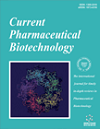-
oa Editorial [Hot Topic: Recent Advances in Treatment Approaches of Lysosomal Storage Diseases (LSDs) (Guest Editor: Paula Rozenfeld)]
- Source: Current Pharmaceutical Biotechnology, Volume 12, Issue 6, Jun 2011, p. 853 - 853
-
- 01 Jun 2011
Abstract
This special topic issue published in the journal Current Pharmaceutical Biotechnology is devoted to Recent advances in treatment approaches of lysosomal storage diseases (LSDs). LSDs constitute a group of more than 50 genetic pathologies characterized by chronic and progressive accumulation of substances in lysosomes. Most of them are caused by genetic mutations in catabolic lysosomal hydrolases genes producing a loss or reduction of their enzymatic activities. For many years, since the identification of lysosomal storage diseases, it was assumed that storage per se was responsible for cell and tissue damage, and palliative treatment of signs and symptoms was the only option for patients. Research conducted in the recent years has produced a revolution in the field of LSDs. Nowadays, it is broadly accepted there are other concomitant molecular mechanisms that translate the primary insult into cell damage. These pathophysiological pathways are becoming a major focus of the investigation in lysosomal storage diseases. This knowledge would be of benefit to generate potential targets of therapy that could be applied as concomitant treatment. Symptomatic treatment was the only possible therapy until 1991, when the first enzyme replacement therapy became available for the treatment of Gaucher disease. Since then, much effort has been put into the development of different treatment approaches, acting at the different steps of the cascade of pathological events: DNA, protein, substrate deposits. In this issue, leading researchers in each of the particular LSDs chosen will give us an up-to-date review of the latest advances in terms of treatment of LSDs. We would be able to learn about the range of possibilities available now for treating each disease.


